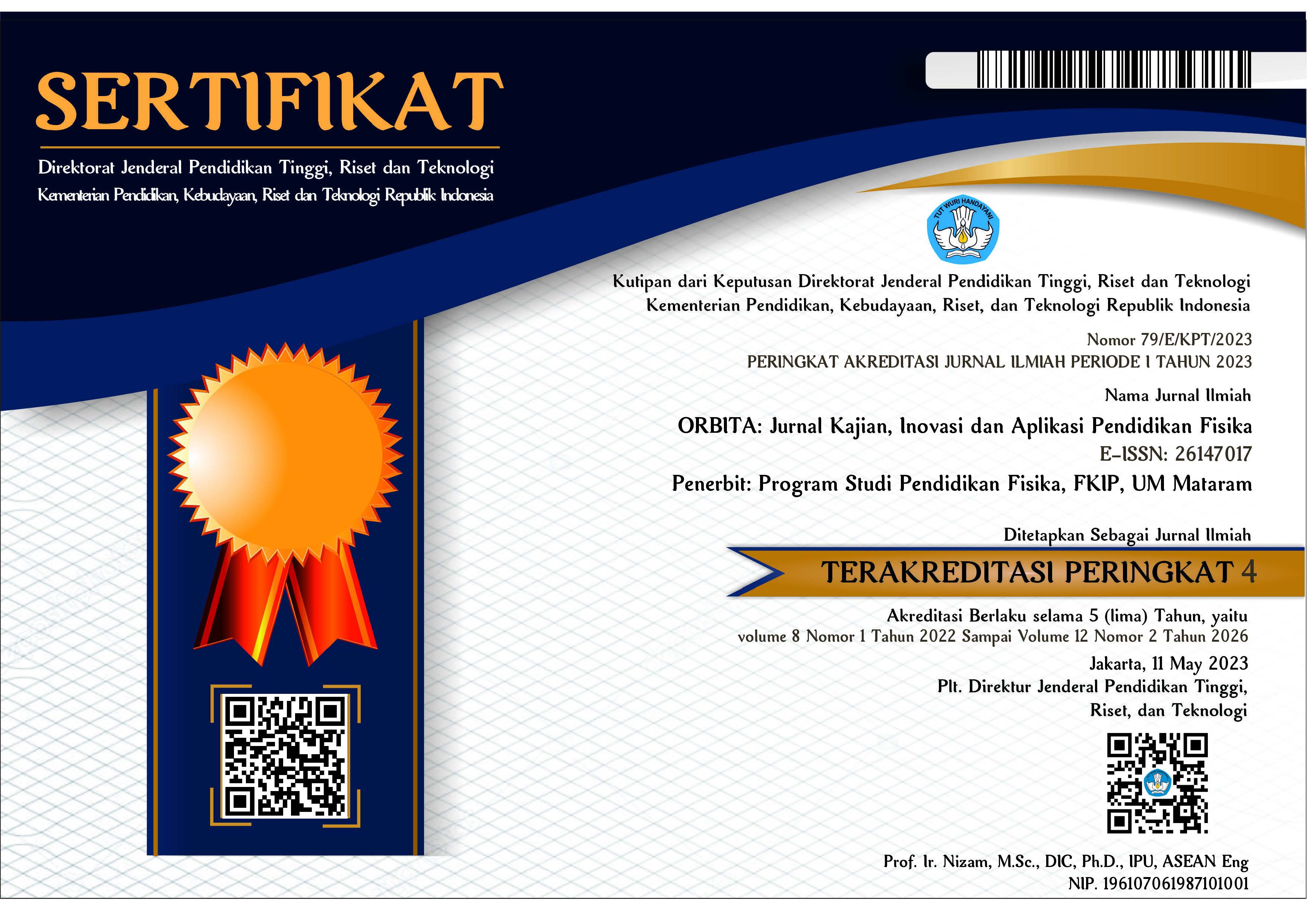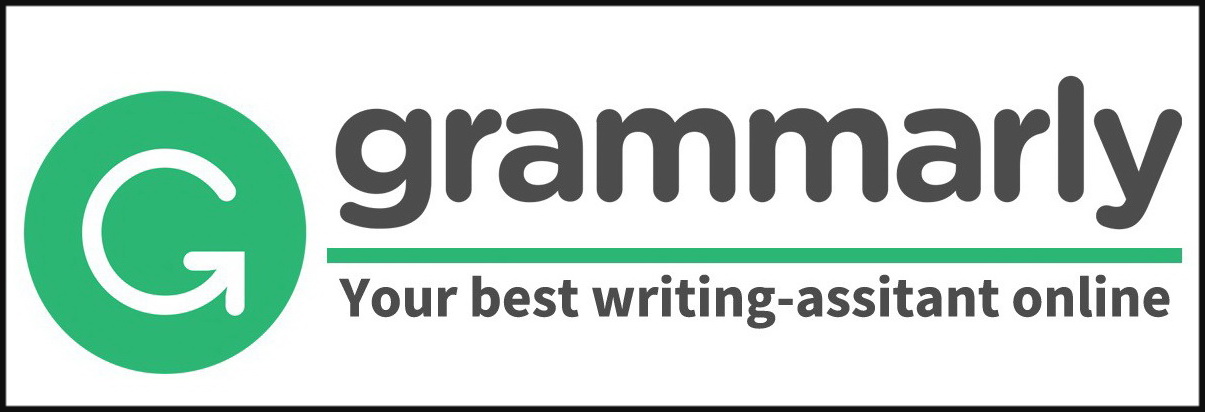STUDI PERBANDINGAN HASIL BELAJAR PEMBELAJARAN 3X2 DENGAN 2X3 JAM PER-MINGGU SISWA SMA NEGERI 2 MATARAM
Abstract
ABSTRAK
Banyak faktor yang mempengaruhi hasil belajar, salah satunya adalah penggunaan cara belajar dan jam belajar. Kebiasaan siswa selalu memadatkan jam belajar terlebih saat akan menghadapi ujian. Jumlah jam belajar yang sama akan memberikan hasil yang berbeda tergantung pada cara penggunaannya. Permasalahannya adalah apakah terdapat perbedaan hasil belajar fisika antara kelas yang mendapat jam pembelajaran 2x3 dengan kelas yang mendapat jam pembelajaran 3x2 jam perminggu siswa kelas XI MIPA di SMA Negeri 2 Mataram. Penelitian ini bertujuan melihat perbedaan hasil belajar fisika siswa yang mendapat pembelajaran 3x2 jam perminggu dengan hasil belajar siswa yang mendapat pembelajaran 2x3 jam perminggu. Penelitian dilaksanakan pada kelas XI MIPA pada semester genap tahun pembelajaran 2020/2021. Jenis penelitian adalah penelitian eksperimen dengan sampel kelas XI MIPA 2 sebagai kelas eksperimen dan XI MIPA 4 sebagai kelas kontrol. Kelas eksperimen mendapat pembelajaran 3x2 jam perminggu dan kelas kontrol mendapat pembelajaran 2x3 jam perminggu. Hipotesis yang dikemukakan pada penelitian ini adalah hasil belajar fisika pembelajaran 3x2 jam perminggu lebih tinggi dibandingkan hasil belajar fisika pembelajaran 2x3 jam perminggu. Pengujian hipotesis dilakukan dengan t-tes pada taraf nyata α = 0,05 dengan derajat kebebasan (dk) = 54 didapatkan t(0,95,54) = 1,67, sedangkan thitung=5,29. Berarti dari hasil perhitungan thitung > ttabel, jadi hipotesis yang diajukan dapat diterima. Berdasarkan analisis penelitian ini disimpulkan bahwa hasil belajar fisika siswa yang mendapat pembelajaran 3x2 jam perminggu lebih baik dari pada hasil belajar siswa yang mendapat pembelajaran 2x3 jam perminggu.
Kata kunci: pembelajaran 3x2 dan 2x3 jam perminggu; studi perbandingan; hasil belajar.
ABSTRACT
Many factors affect learning outcomes, one of which is the use of learning methods and learning hours. The habit of students always tightens their study hours, especially when facing exams. The same number of hours of study will produce different results depending on how it is used. The problem is whether there is a difference in physics learning outcomes between the class that gets 2x3 learning hours and the class that gets 3x2 hours of learning per week for class XI MIPA students at SMA Negeri 2 Mataram. This study aims to see the differences in the learning outcomes of students who get 3x2 hours of learning per week with the learning outcomes of students who get 2x3 hours of learning per week. The research was conducted in class XI MIPA in the even semester of the 2020/2021 learning year. This type of research is experimental research with a sample of class XI MIPA 2 as the experimental class and XI MIPA 4 as the control class. The experimental class got 3x2 hours of learning per week and the control class got 2x3 hours of learning per week. The hypothesis put forward in this study is that the learning outcomes of learning physics learning 3x2 hours per week are better than the learning outcomes of learning physics learning 2x3 hours per week. Hypothesis testing was carried out by t-test at the real level α = 0.05 with degrees of freedom (dk) = 54, it was obtained t (0,95,54) = 1.67, while thitung = 5.29. It means that the results of the calculation of thitung> ttabel , so the proposed hypothesis can be accepted. Based on the analysis of this research, it was concluded that the learning outcomes of students who got learning 3x2 hours per week were better than the learning outcomes of students who got learning 2x3 hours per week.
Keywords: learning 3x2 and 2x3 hours per week; comparative studies; learning outcomes
Keywords
Full Text:
PDFReferences
Abdullah, P. (2013). Manajemen Waktu Belajar. Universitas Negeri Makasar Press.
Ayub, S., Kosim, K., Gunada, I. W., & Zuhdi, M. (2019). MODEL PEMBELAJARAN KESIAPSIAGAAN BENCANA GEMPABUMI DI SEKOLAH DASAR. ORBITA: Jurnal Kajian, Inovasi Dan Aplikasi Pendidikan Fisika. https://doi.org/10.31764/orbita.v5i2.1187
Gusti, A. (2019). Laporan Pelaksanaan Ujian Nasional di SMA N 2 Mataram. SMAN2 Press.
Hakim, T. (2005). Belajar Secara Efektif. Pustaka Pembangunan Swadaya.
Hamalik, O. (1998). Metoda Belajar dan Kesulitan Belajar. Tarsito Bandung.
Juliasari, N., & Kusmanto, B. (2016). HUBUNGAN ANTARA MANAJEMEN WAKTU BELAJAR, MOTIVASI BELAJAR, DAN FASILITAS BELAJAR DENGAN PRESTASI BELAJAR MATEMATIKA SISWA SMP KELAS VIII SE-KECAMATAN DANUREJAN YOGYAKARTA. UNION: Jurnal Ilmiah Pendidikan Matematika. https://doi.org/10.30738/.v4i3.435
Kartono, K. (2005). Bimbingan Belajar di SMA dan Perguruan Tinggi. Rajawali.
Lestari, I. (2015). Pengaruh Waktu Belajar dan Minat Belajar terhadap Hasil Belajar Matematika. Formatif: Jurnal Ilmiah Pendidikan MIPA. https://doi.org/10.30998/formatif.v3i2.118
Nurhikmah, N., Gunawan, G., & Ayub, S. (2018). Pengaruh Model Pembelajaran Berbasis Masalah Berbantuan Simulation Based Laboratory (SBL) Terhadap Hasil Belajar Fisika Peserta Didik Kelas XI IPA SMAN 1 Montong Gading. Jurnal Pendidikan Fisika Dan Teknologi. https://doi.org/10.29303/jpft.v4i1.542
Sari, Y. (2020). Pengaruh Model Pembelajaran Kausalitik terhadap Kemampuan Pemecahan Masalah Fisika Peserta Didik. Jurnal GeoScienceEd Universitas Mataram, 1(1), 11–16.
Semiawan, C. (2009). Strategi Pengembangan Otak: Revolusi Biologi ke Revolusi Mental. Elex Media Komputindo.
Slameto, S. (2000). Faktor-Faktor yang Mem-pengaruhi Belajar. Tarsito Bandung.
Sudjana, S. (2005). Metoda Statistika. Tarsito Bandung.
Yulianti, F., Sutrio, S., & Sahidu, H. (2020). PENGARUH MODEL GIVING QUESTION GETTING ANSWERS MELALUI METODE EKSPERIMEN TERHADAP MOTIVASI DAN HASIL BELAJAR FISIKA. ORBITA: Jurnal Kajian, Inovasi Dan Aplikasi Pendidikan Fisika. https://doi.org/10.31764/orbita.v6i1.1611
DOI: https://doi.org/10.31764/orbita.v6i2.2963
Refbacks
- There are currently no refbacks.

This work is licensed under a Creative Commons Attribution-ShareAlike 4.0 International License.
______________________________________________________
ORBITA: Jurnal Pendidikan dan Ilmu Fisika
p-ISSN 2460-9587 || e-ISSN 2614-7017
This work is licensed under a Creative Commons Attribution-ShareAlike 4.0 International License.
EDITORIAL OFFICE:


























